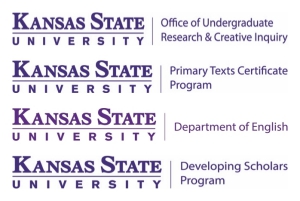Student Major/Year in School
Landscape Architecture, Sophomore
Faculty Mentor Information
Dr. Anne Beamish, Landscape Architecture and Regional & Community Planning, College of Architecture Planning and Design
Abstract
Modern day cities are riddled with vacant lots that attract illicit activity and give a negative impression of the surrounding neighborhood. Vacant lots are born from an urban history of an increasingly privatized public realm and growing socio-political and economic polarization (Foo 2014, 176). Suburbanization, redlining, and urban renewal disproportionately affected lower income neighborhoods, which are rarely able to rebuild without outside financial assistance. “Urban acupuncture” is a theory that views cities as living, breathing organisms and a variety of projects can serve as “needles” that revitalize the community by healing the parts. When applied correctly this theory can help repair urban blight while simultaneously uplifting people in the immediate surrounding area.
I believe urban acupuncture is the key to helping low-income neighborhoods by using a bottom-up or community-centered approach that will help discredit the negative reputations of their neighborhood brought by vacant lots. By activating vacant lots through the creation of designed green space, cities have the opportunity to create community assets, develop a vibrant urban environment, provide social spaces for the community and create new civic infrastructure that can have positive long-term effects on the immediate property values.
My aim is to revitalize my neighborhood near Troost Avenue in Kansas City, Missouri through the use of urban acupuncture and revitalized vacant lots. My driving question for this investigation is: How can we turn empty lots in low-income neighborhoods into community assets? By conducting extensive research into “urban acupuncture” and several precedent analyses of activated vacant lots, I hope to build a toolbox of knowledge that I can later use to make the demonstration plot I created in the first part of this project a reality.
Creative Commons License

This work is licensed under a Creative Commons Attribution-Noncommercial 4.0 License
Recommended Citation
Belk, Ayana (2019). "Reviving Troost: Reactivating Vacant Lots Through Urban Acupuncture," Kansas State University Undergraduate Research Conference. https://newprairiepress.org/ksuugradresearch/2019/posters/69
Reviving Troost: Reactivating Vacant Lots Through Urban Acupuncture
Modern day cities are riddled with vacant lots that attract illicit activity and give a negative impression of the surrounding neighborhood. Vacant lots are born from an urban history of an increasingly privatized public realm and growing socio-political and economic polarization (Foo 2014, 176). Suburbanization, redlining, and urban renewal disproportionately affected lower income neighborhoods, which are rarely able to rebuild without outside financial assistance. “Urban acupuncture” is a theory that views cities as living, breathing organisms and a variety of projects can serve as “needles” that revitalize the community by healing the parts. When applied correctly this theory can help repair urban blight while simultaneously uplifting people in the immediate surrounding area.
I believe urban acupuncture is the key to helping low-income neighborhoods by using a bottom-up or community-centered approach that will help discredit the negative reputations of their neighborhood brought by vacant lots. By activating vacant lots through the creation of designed green space, cities have the opportunity to create community assets, develop a vibrant urban environment, provide social spaces for the community and create new civic infrastructure that can have positive long-term effects on the immediate property values.
My aim is to revitalize my neighborhood near Troost Avenue in Kansas City, Missouri through the use of urban acupuncture and revitalized vacant lots. My driving question for this investigation is: How can we turn empty lots in low-income neighborhoods into community assets? By conducting extensive research into “urban acupuncture” and several precedent analyses of activated vacant lots, I hope to build a toolbox of knowledge that I can later use to make the demonstration plot I created in the first part of this project a reality.


